| |
|
Friday, May 9 Israel at 60 talk by Eyal Dagan
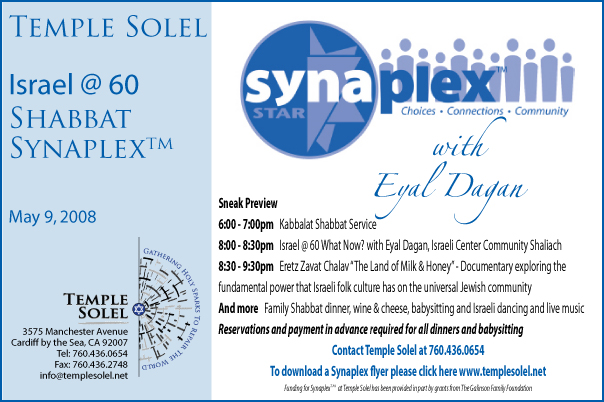
Saturday, May 17 Tifereth Israel Synagogue—Dizengoff Night

Sunday, May 18 Community Israel Independence CelebrationWednesday, May 28 JFS~Ellen Saks lecture on mental illness
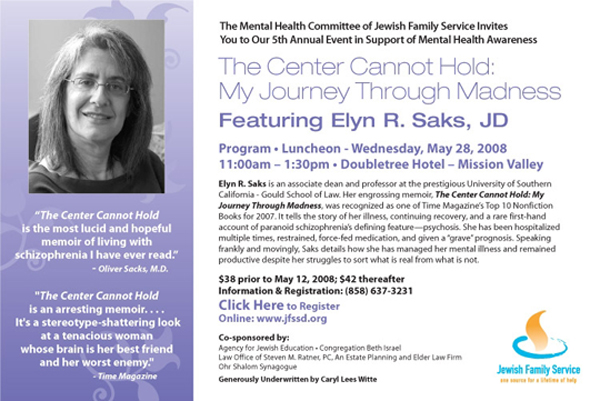
Tuesday, June 3 Guardians Golf & Tennis Tournament


Comfort for the bereaved on Yom Hazikaron and year round: the gift of active memory
By Dov Burt Levy
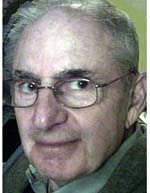 SALEM, Massachusetts—Have you ever gone to a shiva or wake and felt yourself a complete klutz? I have. What to say to the bereaved? How to say it? How to handle the other person's sorrow and especially their tears? SALEM, Massachusetts—Have you ever gone to a shiva or wake and felt yourself a complete klutz? I have. What to say to the bereaved? How to say it? How to handle the other person's sorrow and especially their tears?
An article I read more than 20 years ago actually changed my ability to handle this situation. A gift to me and one for you, if you want it.
Why do I tell this story this week? Three reasons. Because the mother of an Israeli soldier killed in battle wrote the article. Because Yom Hazikaron (Memorial Day for Israel's Fallen Soldiers) will be fully commemorated in America this year along with Israel Independence Day as part of the Israel@60 celebration. Because it changed my life for the better.
Dr. Pat Fischer, a long-time friend, told her story in a 1985 Moment magazine article.
In June 1982, she was working in her office at the University of North Carolina when her rabbi knocked on the door. "Nothing in his demeanor alerted me that something was wrong. He closed the door and said quite simply: 'Greg has been killed.' I just screamed… I howled at the top of my lungs… howled in pain and protest as women before me have, until I was spent."
Her son, Gregory Barry — a handsome, vigorous young man, one of three sons — had made aliyah three years before and settled on Kibbutz Gazit. He entered the army and was killed in action in Lebanon on June 9, 1982.
Dr. Fischer and family members flew to Israel, buried Greg in the kibbutz cemetery and returned to America for the shiva and to fulfill her duty as the Kaddish, which meant, her rabbi told her, "to keep [Greg's] memory alive: not to forget, not to let others forget."
She took the obligation seriously: "Remembering the dead is an injunction... by which the dead continue [to live]. To be a Kaddish is to be willing to suffer the grief of remembering."
Her problem: relatives and friends did not cooperate. They avoided her, afraid of her words and tears.
A high school friend of Greg told her that a group of Greg's friends had spent several evenings together, but they had hardly spoken a word about Greg because they were afraid of upsetting each other.
She wrote, "Is Greg never to be mentioned again by his high school friends (and my friends and relatives)? When they reminisce, will his life be taken from him yet again? Am I, his mother, to fear speaking of him, lest others are made to feel uncomfortable? Is his memory not available as a delight because it may also be sadness? The years of his life are not less worthy, less worth remembering than the years of the others, Greg's brothers and friends, who have not died."
Her tears seemed to bother people the most. She answered that: "To grieve is not merely to dwell on our loss. Yes, we cry for that — but also for the life that has ended. If it was a young life, we cry because the flower has fallen before fully bloomed. If the manner of death was painful or protracted, or abrupt and violent, we cry for that. There are tears of longing that are different from tears of self-pity, and there are tears of regret for business unfinished, and of remorse for injuries real or imagined that are now beyond repair. And there are tears that come with the simple remembering.
"The observer will see the tears and think they are all the same, that they all mean pain, and will not know that the tears are the waters that soothe the pain and that they lubricate our memories. The observer will not know that if we seek to remember, we must be prepared to cry. That is what it means to be the Kaddish."
For me she struck a chord that somehow entered my very being. I got it.
I could, for the first time, be with a grieving Kaddish and listen, talk and even cry with them, without fear or discomfort.
I urge you, dear reader, to review Dr. Fischer's words again, until you get it as well. People in grief need our hugs, memories of the deceased and our comfortableness with their tears, more than they need superficial conversation or shiva food.
Friday-Saturday, June 6-7 JFS~Judaism on the Wild Side

Let us look at Israel‘s Declaration of Independence as its 60th birthday nears
By J. Zel Lurie
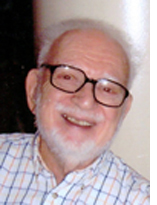 DELRAY BEACH, Florida—It was erev Shabbat May 14, 1948, the fifth of Iyar, 5708. The British had announced that they were giving up the Palestine Mandate and the last British High Commissioner had sailed away that afternoon. The United Nations had decided to partition Palestine into three parts, an Arab state and a Jewish state with almost equal areas and an international rule over Jerusalem. DELRAY BEACH, Florida—It was erev Shabbat May 14, 1948, the fifth of Iyar, 5708. The British had announced that they were giving up the Palestine Mandate and the last British High Commissioner had sailed away that afternoon. The United Nations had decided to partition Palestine into three parts, an Arab state and a Jewish state with almost equal areas and an international rule over Jerusalem.
The U.N. resolution to divide Palestine had been adopted on November 29, 1947. The Jewish community numbered 600,000. The Palestinian Arabs outnumbered them better than 2 to 1. The Arabs did not accept the UN decision to partition the land. They wanted all of it. The attacks on the Jews began the day after the UN vote, on November 30, 1947.
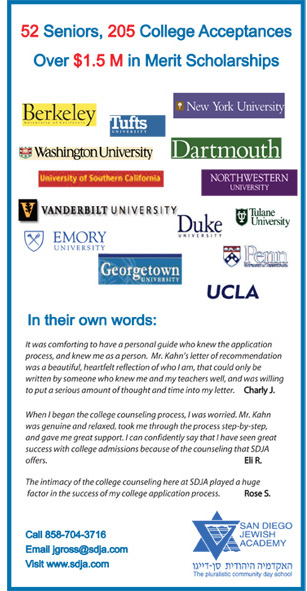 Undaunted by 6 months of war while the UN dithered and constant advice by world leaders not to do it, on the fifth of Iyar, David Ben Gurion rose at a small assembly in the Tel Aviv museum to read Israel’s Declaration of Independence. He began with these stirring words: Undaunted by 6 months of war while the UN dithered and constant advice by world leaders not to do it, on the fifth of Iyar, David Ben Gurion rose at a small assembly in the Tel Aviv museum to read Israel’s Declaration of Independence. He began with these stirring words:
“The Land of Israel was the birthplace of the Jewish people… Here they first attained statehood, created cultural values of national and universal significance and gave to the world the eternal Book of Books.”
The next day the armies of Egypt, Syria, Jordan and Iraq, with contingents from Morocco and Yemen began the invasion of Palestine. They had little coordination. With the exception of the British-led Jordanian Arab Legion, their officers were ill-trained members of the Arab aristocracy. The Jews were fighting for survival. They had the support of Communist Russia, whose Czechoslovakian satellite sold the Jews arms and airplanes. Holland, Germany and France also supplied arms and ammunition. American and British Jews raised the money to pay for the arms and sent volunteer soldiers and experts to train the survivors of the Holocaust, who were flocking in.,
The proclamation of Independence promised that Israel “would open the gates of the homeland wide to every Jew and confer upon the Jewish people the status of a fully privileged member of the comity of nations.”
This double promise has been kept.
The casualties in Israel’s first fight for survival were tremendous. Israel lost one percent of the population, 6,000 young men and women, The equivalent in the United States would be almost 3 million dead in just one of its wars.
The Arabs call it Al Nakba, the disaster. About two-thirds of the Arab population fled or were expelled. Those that remained were promised full equality and citizenship. Here are the words of the proclamation read by Ben Gurion sixty years ago:
“The State of Israel… will foster the development of the country for all its inhabitants. It will be based on freedom, justice and peace as envisioned by the prophets of Israel. It will ensure complete equality of social and political rights irregardless of religion, race or sex.”
The promise of full equality has not been fulfilled, despite the admonition of the prophets to treat the stranger as one of your own, “for you were strangers in the land of Egypt.”
Sikkuy, an Israeli organization has been documenting Israeli discrimination against its Arab citizens for many years. Improvement has been miniscule.
American Jewish organizations record a vast improvement. They “discovered” the Israeli Arabs during the second Lebanese war in 2006 when Arabs and Jews in the Galilee were bombed equally by Hezbollah rockets. UJA allocations to Arabs in the Galilee rose from zero to tens of millions, still a drop in the bucket of what we spend in Israel. And an interagency task force was organized to educate Jewish professionals on Israeli Arab problems.
Israel’s Declaration of Independence does not mention Israel’s borders. In the War of Independence Israel increased its share of Palestine from the about 47 percent, allotted by the UN resolution, to 78 percent, The Palestinians in the remaining 22 percent have agreed to form a Palestine State and negotiations are ongoing for its borders. The Palestinians are demanding all of the 22 percent while Israel wants to keep the cities it has built, such as Maale Adumim on West Bank territory,
I have a suggestion which might alleviate some of the friction between Ehud Olmert and Mohammed Abbas (Abu Mazen).
My suggestion is that the economic union of the Jewish and Arab states, laid down in the UN resolution sixty years ago, be revived. The Declaration says that the “State of Israel… will take steps to bring about the economic union of the whole of Eretz Israel..”
At the moment the economy is dominated by the Jewish majority. Laws can be passed, similar to those in the United States which give minority-owned businesses a leg up in securing government contracts.
Because the fifth of Iyar this year falls on a Saturday, Israel will celebrate its sixtieth anniversary on the third of Iyar which is Thursday May 8. The Palestinians will mark Al Nakba on May 15,

THE JEWISH CITIZEN Personality in the News
Marketing Middle East peace through the products offered in Western supermarkets
By Donald H. Harrison
 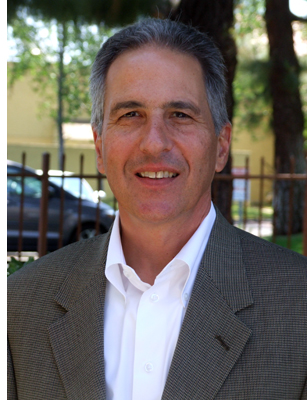 SAN DIEGO—Sanford Ehrlich (photo at right) is the Qualcomm executive director of the Entrepreneurial Management Center in San Diego State University’s School of Business. He is a man who helps teach students how to develop an idea and then to grow it, whether in the private or public sector. SAN DIEGO—Sanford Ehrlich (photo at right) is the Qualcomm executive director of the Entrepreneurial Management Center in San Diego State University’s School of Business. He is a man who helps teach students how to develop an idea and then to grow it, whether in the private or public sector.
At the invitation of Dr. Bonnie Stewart, executive director of the Hansen Center for World Peace (a unit of the San Diego State University Research Foundation), Ehrlich has been focusing on a project in which students may help stimulate cooperative relations among Israelis, Palestinians and neighboring Arab countries.
Here’s a question for consumers: If a brand of olive oil blended from olives produced and sponsored both by Israel and the Palestinian Authority were to come to market, under a label identifying it as a peace product, would you be likely to give it a try?
In a recent interview, Ehrlich said he believed people who want peace in the Middle East would be willing to buy the product, at least once, to give peace a boost. However, for such cause-related marketing to merit continuing sales, the product would have to be both tasty and superior to what already is on the market.
For years, Israel quietly has been cooperating with such Arab neighbors as Egypt and Jordan on before-market techniques for improving the quality of such agricultural products as olives, tomatoes, dates, and potatoes. Using a process known as Integrated Crop Management (ICM), a program co-sponsored by the Hansen Institute and the Peres Center for Peace in Israel has brought Arab and Israeli farmers and technicians to work together in such areas as irrigation, pest control, seed development, management of those seeds, and proper management of the crops in order to assure the crops’ high quality.
Now, with Ehrlich’s help, the Hansen Foundation and the Peres Center are embarking on another phase of the project: developing a plan for the marketing of products grown cooperatively by Middle Eastern countries.
“For example, in looking at any one of these crop products, what type of derivative food products can be obtained from those crop products and placed in the European markets?” Ehrlich asked. “There are a lot of products that can be developed from dates, from tomatoes, potatoes, olives—there are derivative products that we can innovate with.”
With the help of Marvin Spira, a consultant with wide experience in the food industry, Ehrlich is seeking to bring together “the farmer and the distributor and the marketer… with the end corporation which buys this, whether it is a supermarket chain, or whole-food stores.” He wants to identify: “Who is going to be growing and producing it? Who is going to be distributing it? Who is going to be marketing it? Who is going to do the P-R (public relations)? Who is going to do the branding? There is an array of service providers. The idea is to have that whole value chain in countries collaborating together to put something in the EU market that would be innovative and branded as a Middle East collaboration.”
Graduate students in agriculture, technology, marketing and business in the various countries—including in the United States, at San Diego State University—can help pave the way for Middle East cooperation, assuming sufficient grants are attracted, Ehrlich said.
“We would look for those students to characterize the markets within their own countries and within the European Union,” Ehrlich said. “How much could they sell? Where do opportunities lie? We would like to put together teams of students that would be cross-country who would begin the work to determine what are the opportunities, and what are the niche markets.”
As an example of a niche market, Ehrlich said there is “a company that is producing a product made from tomatoes that you can use to wrap sandwiches, so it is basically like a sandwich wrap and it has great properties associated with it.”
While all this may sound like a long-term process, Ehrlich believes some products can be brought to market in a relatively short time frame.
“I think the olive-oil project could come together fairly soon,” he said. “If we engage the right producers, distributors, etcetera, it could come about fairly quickly. There is already a German woman whom we met in France last year who puts together a three-box set of olive oil—French, Israeli and Palestinian. In that case, you have a Palestinian and Israeli farmer who collaborated with each other to have their olive oil bottled. Those two farmers in themselves form the beginning of the blended olive oil market, so I don’t think that would be too difficult to get off the ground.”
Ehrlich expresses enthusiasm for the role students can play. “What is particularly exciting for me is having students from all across the Middle East—all of whom probably have some preconceived stereotypes about each other, not only Arabs and Israelis, but also about other countries of the Middle East—and getting these students to collaborate with one another. On the basis of their collaboration, they can become entrepreneurs because all of them have an interest in starting businesses and growing businesses.”
Ehrlich, who is Jewish and was raised and educated in upstate New York, has had the opportunity to meet and work with Arab business executives in a collaboration with the Beyster Institute (named for SAIC Founder Robert Beyster) at UCSD’s Rady School of Business.
From 2004 to 2007, different representatives of Arab countries across the Middle East, as well as some Arabs from Israel, spent three weeks in San Diego in a U.S. State Department-sponsored program in which “we were teaching marketing and marketing-based approaches, granting, marketing positioning, leadership,” Ehrlich said. “Within leadership we were talking about values, building culture, ethics, all the various approaches to the way an American company operates.”
The program involved “two weeks of theory and three-day internships in an American company to observe practices and see how they might employ them within their own country. They also provided a presentation within the company about their country,” he said.
Ehrlich said as the teacher in such a program, he learned a lot from his students:
“You sit down with someone from Saudi Arabia, or Iraq, or wherever it is, and you make the connection and you see they are just trying to live their lives like you are trying to live your life. And they think the stuff that is going on (terrorism) is as crazy as you think it is. They also think that a lot of what is going on here is crazy.”
For himself—and possibly for others who come together in the program—the process of encounter “has been life changing,” Ehrlich said. “This (the Middle East) is a part of the world that I have heard about all my life, but with a uni-dimensional ear. If you are American, you get what is fed to you by the American press. If you are Jewish, you get what is fed by the Jewish press and so that obviously prompts you to form certain judgments.”

 |
Balloon Utopia
Sandi Masori
619 339 8024
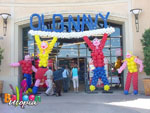 |
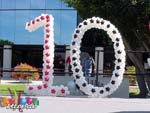
! |
 |

A dybbuk that teaches righteousness
“The Entertainer and the Dybbuk” by Sid Fleischman; Harper Collins Children’s, 2008, 180 pages, $16.99
By Joel A. Moskowitz, M D
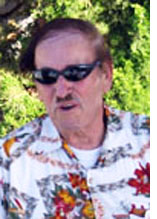 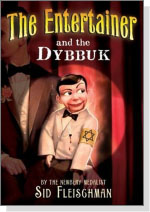 SAN DIEGO—Sid Fleishman, noted award winner author of children’s books, chose to exhume the dybbuk (a mythical figure out of Jewish folklore), a ghost, who needs operationally to inhabit the corpus of a ‘living’ entity to gain expression. But does invading a wooden doll qualify? SAN DIEGO—Sid Fleishman, noted award winner author of children’s books, chose to exhume the dybbuk (a mythical figure out of Jewish folklore), a ghost, who needs operationally to inhabit the corpus of a ‘living’ entity to gain expression. But does invading a wooden doll qualify?
Blend an “Old Case File” theme and a semi-talented Christian entertainer whose puppet has a new resident manager, a dybbuk hunting for an SS Colonel who escaped punishment for his war crimes, and you have a plot worthy of Agatha Christie or a ghost-story written by Stephen King with dialogue by a wise-cracking Charlie McCarthy.
Newberry Medalist Fleishman, author of 60 books, has at last conquered a theme whose magnitude is of the world’s worst crime against humanity. The societal evil of the Nazis and the compliant Germans and others who helped almost achieve Hitler’s design to murder every Jew is almost too much to think about. Let alone meaningfully write about. Sid Fleishman’s dybbuk is the ghost of a youth who was a Holocaust victim.
 This dybbuk of a youth not yet Bar Mitvahed approaches second rate ventriloquist Freddie Birch. One wonders whether the choice of the last name was deliberate inasmuch as The Birch Society was known to be anti-Semitic? Freddie had volunteered to fight the Nazis. He became a bombardier. His B-52 was shot down over the oil fields in Romania. In the POW camp, he carved the comic face of his puppet. He escaped, with the aid of a “boy” and vowed to remember him, but he never did. This dybbuk of a youth not yet Bar Mitvahed approaches second rate ventriloquist Freddie Birch. One wonders whether the choice of the last name was deliberate inasmuch as The Birch Society was known to be anti-Semitic? Freddie had volunteered to fight the Nazis. He became a bombardier. His B-52 was shot down over the oil fields in Romania. In the POW camp, he carved the comic face of his puppet. He escaped, with the aid of a “boy” and vowed to remember him, but he never did.
After the war, having been an orphan with no family to which he might return, Freddie Birch chose to remain in Europe. His act mostly bombed. The boy who helped Freddie Birch escape became the dybbuk with a mission to bring to justice the SS Colonel who killed him and his sister. Dybbuks need ‘human’ form to communicate. Owed a debt, he chooses to use Freddie’s puppet as his ‘human’ vehicle. One might say it was beshert (kismet/destiny).
With a tongue “shaped like an ice pick” from dodging Nazi soldiers, hanging out in sewers with other dybbuks, the ghost’s patter spices up Freddie’s dull dialogue. Dybbuks have unfinished business. But Avrom Amos (the dybbuk’s natural name) quest is not Freddie’s. Freddie wants nothing to do with this unwelcome guest. Freddie seeks out a rabbi to exorcize the smart-mouth dybbuk. Attempts to blow a shofar into the dummy’s ear do nothing but mildly irritate his insistent companion.
Eventually Freddie learns that his association with the dybbuk can be a performer’s route to theatrical fame. The dybbuk projects his voice through Freddie’s closed lips. Seeming to be able to speak through taped lips or while drinking water amazes audiences. No one would conceive that the sounds come from a dybbuk who inhabits a wooden puppet. Gigs are now easy to obtain. There is a catch though. The dybbuk will not perform on Shabbos! He insists on kashruth. Even more, he wants Freddie to help him become Bar mitzvahed!
Fleishman educates Freddie (and the reader) about the Nazi terror. The dybbuk suffers nightmares about his experiences in the Holocaust. As he tells Freddie about his terrifying dreams, we learn that despite a saucy wit, great pain still mars his psyche.
Ultimately the Nazi is found and put to trial. How the dybbuk achieves justice provides partial satisfaction. No one can bring back the loss of those souls who were brutalized and killed.
Books such as these artfully tell those who survived, Jews and Christians, some of what happened. Sid Fleishman writes that the story of Hansel and Gretel with the witch’s oven was never imagined to be what might happen to real people. The Entertainer and the Dybbuk is a modern tale of ovens and wickedness not to be dismissed as a fairy tale. This thought provoking book is recommended for adults as well as children who like the hero/dybbuk Avrom Amos are from age 12 and up.



ADVENTURES IN SAN DIEGO JEWISH HISTORY
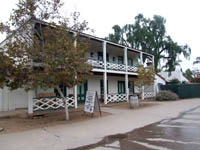
Robinson-Rose House
|
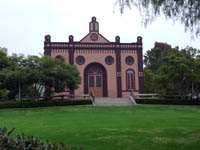
Old Temple Beth Israel |
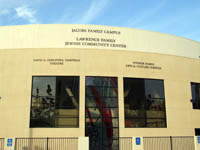
Lawrence Family JCC |
Editor's Note: We are reprinting news articles that the Southwestern Jewish Press ran in 1950. If you have historical topics about the San Diego Jewish community you would like us to explore, please e-mail your suggestions to editor Don Harrison at sdheritage@cox.net
Men’ Club Formed (at) Beth Jacob
From Southwestern Jewish Press, April 14, 1950, page 9
At a meeting held on Thursday evening, March 23, 1950, a nucleus of some fifty men spearheaded by Morrie Kraus formed the Beth Jacob Men’s Club.
In an atmosphere permeated by good fellowship this group of young men laid plans for an active program of sociability and benefit both to themselves and Beth Jacob Congregation.
Temporary officers elected to serve are Arthur Gordon as Chairman; Dr. Joseph A. Kwint as Secretary, and Sidney Weiss as Treasurer.
Charter membership in this fine new organization will be open until June 1, it was announced by Chairman Arthur Gordon. A cordial invitation is extended to all young men of the community to join this group which is scheduling monthly meetings for an exchange of ideas to promote good fellowship and a better understanding of current problems in their daily life.
*
Rabbi Cohn to Head Institute
From Southwestern Jewish Press, April 14, 1950, page 9
At a dinner meeting of the faculty of the Jewish Education Commission preceding the Commencement Exercises of the Institute of Jewish Studies, it was unanimously voted that Rabbi Morton J. Cohn will become Acting Dean of the Institute. Dr. A.P. Nasatir bade farewell to the staff and thanked them for their cooperation during the past year. Dr. and Mrs. Nasatir will leave San Diego in June and spend one year in France.
Mr. J.M. Kartzinel, the Pacific Coast representative of the Jewish Education Association, was a guest at the dinner which was attended by more than 30 people.
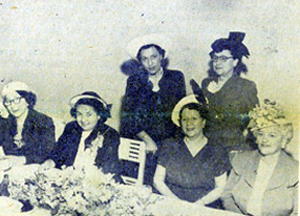 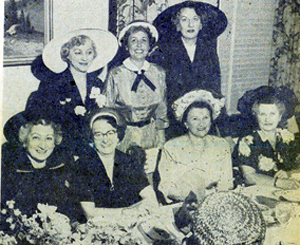
Reflections on the 2nd Anniversary of Israel
From Southwestern Jewish Press, April 28, 1950, page 1
By Rabbi Monroe Levens
What do we expect from the State of Israel by way of benefit to American Jewry?
More, I believe, than just the opportunity for humanitarian expression. We pray the day may speedily come hen persecution and oppression of human beings shall disappear from the world. We anxiously await the time when Israel shall be economically self sufficient, secure and stable.
Israel will lose its most significant meaning to American Jewry if it does not become a source of spiritual enrichment for us. We expect Israel to help us want to live as Jews as fully as possible.
In this regard, the report of a recent mission on religion in Israel, sponsored by the Rabbinical Assembly in America, is of great interest. The report shows that the trend in Israel is either of an extreme Orthodox type, utilizing political advantage for its preservation, or else of a militant, secular, atheistic type, which is cut off sharply from traditional Jewish design. Traditional Jewish observances and holiday celebrations are frequently devoid of spiritual emphasis. The Bible and sacred Jewish writings are regarded merely as national literature. The Synagogue, as the symbol and instrument of Jewish spirituality, has little relevance to the life of most Israeli Jews. The Rabbinate is reduced to a ceremony-performing agency and does not function as a source of spiritual guidance. An attitude common among the Sabras is to regard religion as something old fashioned and obsolete.
This situation, though of momentous concern, need not be viewed with undue alarm and certainly not with despair. It is understandable, in terms of the factors affecting the establishment of the Jewish State, and the condition of transition which exists in Israel.
Nevertheless, one thing emerges clearly: Israel will need much help spiritually even as it needs it materially. Before Israel can serve us spiritually, we will have to so serve it.
Only an American Jewry strong in its own religious life can fulfill such an obligation. The occasion of the 2nd Anniversary of Israel calls s to strengthen the Synagogue as the repository of our spiritual treasure and as the foremost power for our preservation.
Officials Send Greetings
From Southwestern Jewish Press, April 28, 1950, page 1
{telegram}
Maxwell Kaufman, Publisher
Southwestern Jewish Press
333 Plaza, San Diego, Calf.
I am pleased to join with the Jewish citizens of California in observing the second anniversary of the State of Israel. It is my hope that the passing years will see constant progress toward the goal of a peaceful and prosperous homeland for those who have suffered so much oppression.
With best wishes I am,
Earl Warren
Governor of California
{telegram}
Mr. Maxwell Kaufman, Publisher
Southwestern Jewish Press
San Diego, California
Dear Mr. Kaufman:
On the occasion of the second anniversary of the new state of Israel, I wish to express congratulations and best wishes. The courage and vision of those who are building Israel is an inspiration to the world. May continuing success reward their efforts.
Cordially and sincerely,
Harley E. Knox, Mayor
The City of San Diego
Comments on State of Israel Anniversary
From Southwestern Jewish Press, April 28, 1950, page 1
By Rabbi Morton J. Cohn
As we light the second candle on Israel’s birthday cake, and recite the traditional blessing of thanksgiving to God for having preserved us to celebrate this joyous occasion, it is well to reflect upon Israel’s achievements of the past two years and the crucial problems which confront it in the present and the immediate future.
The astounding phenomenon of the rebirth of a people upon its ancestral soil is almost unprecedented in history. Add to this the amazing defense of the new nation against overwhelming numerical and military odds, while welcoming 400,000 refugees from Europe and the near east, and we must stand in awesome admiration of the stupendous achievements of this lusty newcomer in the family of nations.
While American Jewry can congratulate itself on the part it has played in this modern miracle of our day, let us use this second anniversary to remind ourselves of the severe problems which threaten the welfare and perhaps even the existence of Israel: the possibility of renewed invasion by rapidly re-arming Arab states; the controversy over the proposed internationalization of Jerusalem; the mounting tide of immigration and the resulting dislocations in housing, food, and employment; the desperate need of the nation for financial help and capital investment from abroad, in order to establish a more favorable trade balance—these are some of the crucial problems with which Israel is struggling. We must continue to uphold the hands of our co-religionists in Israel by sacrificial giving.
As for the long-range relationship between Israel and the Jews of America, it is now time for the American Jewish Community to recognize that it must become religion-centered. We who live in this most blessed of lands, the only nation to which we owe political allegiance, are Jews by virtue of our religious and cultural tradition.
Therefore, the primary significance of the new State of Israel to us lies in the fact that we can serve her and ourselves best by the strengthening and deepening of our religious ties, by ever more active participation in promoting the welfare of the American Synagogue.

SAN DIEGO JEWISH WORLD THE WEEK IN REVIEW
Cynthia Citron in Los Angeles: From Door to Door is a Dor v' Dor story
Donald H. Harrison in San Diego: There are no cushions in the Duvdevan
Sheila Orysiek in San Diego: What kind of dance accompanied Song of the Sea? We have some interesting clues
Ira Sharkansky in Jerusalem: Independence Week brings its tensions
Dorothea Shefer-Vanson in Jerusalem: Orphaned art looking for owners
Adventures in San Diego Jewish History: What was the Jewish community news in 1950? Archives of the Southwestern Jewish Press provide some of it.
Donald H. Harrison in San Diego: Terror survivors hosted at Beth Am
Rabbi Baruch Lederman in San Diego: When it's not as plain as the writing
Dov Burt Levy in Salem, Massachusetts: 'Smitten Zionist' tells of Israel love affair
Rabbi Leonard Rosenthal in San Diego: 'Can you love your neighbor as yourself?'
Gary Rotto in San Diego: After several toe-dips, Block takes the dive
Adventures in San Diego Jewish History: What was the Jewish community news in 1950? Archives of the Southwestern Jewish Press provide some of it.
Shoshana Bryen in Washington, D.C.: Kuwait-Syria connection; Iraq's cell phones
Carol Davis in San Diego: Backyard's dumbed-down female show
Donald H. Harrison in San Diego: Students, survivors jointly commemorate Shoah at San Diego Jewish Academy
Lloyd Levy in Eilat, Israel: Holidays of despair, struggle and salvation
Sheila Orysiek in San Diego: Chapter Six in the serialization of her novel, Reluctant Martyr
Adventures in San Diego Jewish History: What was the Jewish community news in 1950? Archives of the Southwestern Jewish Press provide some of it.
Yvonne Greenberg in San Diego: Catholic university honors a rabbi for her career pursuing social justice, tikkun olam
Ulla Hadar in Kibbutz Ruchama, Israel—Sha'ar Hanegev aids SDJA's Shoah project
Donald H. Harrison in Poway, California: $11,500 reward offered for capture of vandals of Ner Tamid Synagogue's marker
Vicki Raun in La Jolla, California: 'God was in the boxcars'—Lou Dunst
Hal Wingard in San Diego: Three songs: "Kindness," "Ruth's Song" and "Bar Mitzvah"
Adventures in San Diego Jewish History: What was the Jewish community news in 1950? Archives of the Southwestern Jewish Press provide some of it.
Shoshana Bryen in Washington, D.C.: Could Mohammed ElBaredei have a bias?
Carol Davis in San Diego: Gaviota: hacienda tale in Porfirio's time
Donald H. Harrison in San Diego: Filner turns spotlight on veterans' suicides
Adventures in San Diego Jewish History: What was the Jewish community news in 1949? Archives of the Southwestern Jewish Press provide some of it.
< BACK TO TOP
|
|
